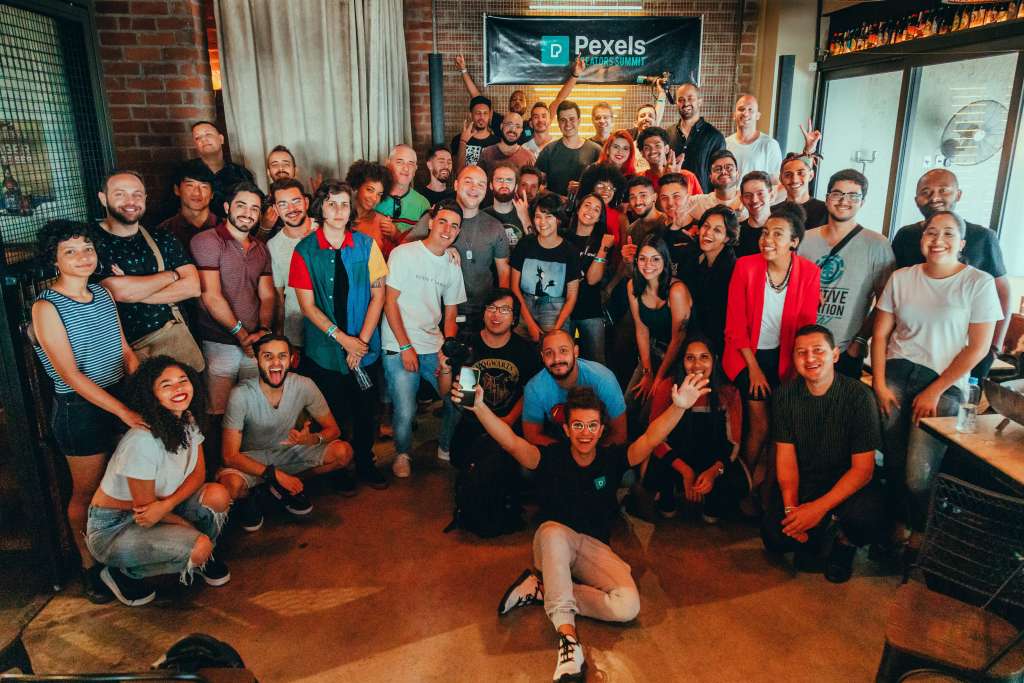Our bosses have told us to focus on how to boost employee morale and motivation at the workplace.
For some time, employee motivation and morale have become concerns. Not only is it important to keep employees feeling motivated, but it’s also essential to have a united and happy workforce that works together toward the same goal.

How SwagMagic can help your brand?
- Bulk Buy & Save on your gifts!
- Curate Customized Swag Boxes!
- Launch Your Store for your employees!
- Secure Swag Storage with us!
The people ops team came through for us and provided us with some great tips that can help boost confidence and inspiration in the workplace, so we can all do our best work.
We got a surprising email at the beginning of the week that told us we were all invited to an escape room activity the following day.
We arrived at our chosen escape room location and were surprised to find they had created a complete replica of our office inside the escape room.
The door closed behind us as we wandered around this odd office, and suddenly the lights went out. We had to use our wits and find clues to get us out of this room before our time ran out.
Strategies and Fun Ways to Boost Employee Morale at Work
Boosting employee morale and motivation is essential for any organization, as it can lead to improved productivity, reduced turnover, and a positive work environment. Here are several strategies to enhance morale and motivation:
- Clear Communication:
- Ensure that employees understand the company’s mission, vision, and values.
- Provide regular updates on company developments, projects, and goals.
- Use open and transparent communication, encouraging employees to share their thoughts and concerns.
- Recognition and Appreciation:
- Regularly recognize and reward employee achievements, both big and small.
- Create an ‘Employee of the Month’ program or similar initiatives.
- Celebrate team achievements and milestones together.
- Opportunities for Growth:
- Provide training and development opportunities.
- Offer chances for promotions and role changes within the company.
- Encourage employees to set and pursue professional goals.
- Work-Life Balance:
- Offer flexible working hours or remote work options.
- Encourage breaks and vacations.
- Respect personal time and boundaries.
- Positive Work Environment:
- Create a pleasant and comfortable workspace.
- Ensure that office tools and equipment are updated and functional.
- Organize team-building activities, workshops, and off-site retreats.
- Feedback and Input:
- Hold regular one-on-one check-ins or performance reviews.
- Solicit feedback from employees on how to improve the workplace.
- Implement an open-door policy where employees feel comfortable discussing any issues or suggestions.
- Competitive Compensation and Benefits:
- Regularly review compensation to ensure it’s competitive with industry standards.
- Offer benefits such as health insurance, retirement plans, and other perks.
- Consider non-traditional benefits like gym memberships, child care services, or wellness programs.
- Inclusive and Diverse Workplace:
- Foster a culture of inclusivity where everyone feels respected and valued.
- Offer training and workshops on diversity, equity, and inclusion.
- Celebrate various cultures, backgrounds, and experiences.
- Empower and Trust:
- Give employees autonomy in their tasks and projects.
- Trust employees’ expertise and avoid micromanaging.
- Encourage innovation and new ideas.
- Address Issues Promptly:
- Handle conflicts, concerns, or grievances quickly and fairly.
- Ensure that management is trained in conflict resolution.
- Set up mechanisms for employees to report issues anonymously if needed.
- Invest in Employee Well-being:
- Offer mental health resources and counseling services.
- Organize stress-reducing activities like yoga sessions or meditation workshops.
- Encourage physical activity, whether through organized team sports or individual fitness initiatives.
- Celebrate Together:
- Organize occasional parties, picnics, or get-togethers.
- Celebrate company anniversaries, holidays, and special occasions.
- Recognize personal milestones like birthdays or work anniversaries.
Consistent efforts in these areas can create a positive work environment where employees feel valued, motivated, and invested in the organization’s success. Remember that a motivated employee is more productive and more likely to stay with the company long-term.
Of all the employee morale-boosting activities they could have chosen, an escape room was a great decision.
Not only did it push us to work together, but it also helped us discover things about our co-workers that we didn’t know before! The team spirit and camaraderie built during the escape room experience were remarkable.
We’d all been on some fun ways to boost morale at work, but this was a truly unique experience. Afterward, we were much more cohesive and productive in the workplace.
Curate the perfect box of handpicked gift they’ll love and send joy their way
The problem-solving skills that we developed during the escape room also came in handy when it came time to tackle real-world challenges. With our newfound energy, we could finish tasks faster and with better results!

Who is Responsible for Employee Morale at the Workplace?
Maintaining employee morale is a shared responsibility involving various organizational stakeholders. Here’s how different parties contribute:
Management and Executives
- Setting the Tone: The leadership team sets the organizational culture, which can either enhance or dampen morale. Their actions, attitudes, and communication styles are models for the rest of the employees.
- Decision-making: Executives make key decisions about policies, compensation, and benefits directly impacting employee satisfaction.
- Resource Allocation: They are responsible for providing the resources needed for employees to successfully complete their tasks, from technology training.
Human Resources (HR)
- Policy Implementation: HR implements policies around workplace behavior, dispute resolution, benefits, and other factors that influence morale.
- Feedback Mechanisms: They often establish systems for performance reviews and feedback, which can help identify morale issues before they become serious problems.
- Well-being Initiatives: HR often spearheads initiatives related to employee well-being, from mental health resources to team-building activities.
Team Leaders and Managers
- Day-to-Day Environment: Managers have the most direct influence over an employee’s daily experience and are responsible for setting the tone within their teams.
- Recognition and Feedback: They are usually the ones recognizing and rewarding good performance, as well as offering constructive feedback.
- Conflict Resolution: Managers often act as the first point of contact for resolving interpersonal conflicts or professional obstacles, which can significantly impact morale.
Employees
- Peer Support: Employees contribute to each other’s morale through support, collaboration, and camaraderie.
- Positive Attitude: An individual’s attitude can influence the mood of the whole team.
- Feedback: Employees are often encouraged to provide feedback to management through various channels, contributing to the shaping of policies and initiatives that improve morale.
Labor Unions (if applicable)
- Advocacy: Unions often advocate for policies and benefits that will improve employee morale, such as better working conditions or wage increases.
- Dispute Resolution: They may serve as a mediator in conflicts between employees and management, seeking to resolve issues in a way that maintains or improves morale.
External Partners
- Consultants and Trainers: Sometimes, organizations bring in external experts to assess the workplace culture and offer recommendations to improve morale.
- Clients and Customers: Positive interactions with valued clients and customers can also improve morale, as they often validate the employee’s work and contribute to a sense of purpose.
In summary, the responsibility for employee morale is collective and cuts across various organizational roles. A holistic approach involving all these stakeholders is usually the most effective way to create and sustain high employee morale and motivation levels.
As we looked around the office, we started to find some clues that were entirely out of place. John discovered a whole box of bulk swag t-shirts, but strangely, they had a very different logo.
Some unique recycled pens weren’t in our office supply closet.
Someone had taken the initiative to order some fantastic swag of a higher quality and with a more creative flair.
We also noticed a board in the break room full of jokes, cool inspirational quotes, and exciting activities for us to do during our lunch breaks. We realized that maybe an individual or group was trying to show us how to boost employee morale and motivation with some amazing ideas.
As we checked the computers, we found employee morale examples and a list of 9 tips to instantly boost employee morale. Still, one thing was missing, any indication of who is responsible for employee morale.

Small Fun Activities to Boost Low Employees Morale
Small fun activities can boost morale, foster teamwork, and create a positive work environment. Here are some ideas for small fun activities you can organize for employees:
Ice-Breakers & Quick Games
- Two Truths and a Lie: People state two facts about themselves and one falsehood. Others guess which is the lie.
- Rock, Paper, Scissors Tournament: A classic game that takes minutes to complete but offers lots of laughs.
- Speed Networking: Give everyone 3 minutes to talk to a person they haven’t interacted much with. Ring a bell, and they switch partners.
Creative Challenges
- Desk Decorating Contest: Have a theme (seasonal, sports, etc.) and give employees an hour to decorate their workspace.
- Doodle Duel: Give everyone paper and pens. Call out themes and give them one minute to doodle something related.
- Flash Fiction: Challenge employees to write a story in 100 words or less. Share and vote on the best one.
Physical Activities
- Office Scavenger Hunt: Create a list of items for employees to find around the office.
- Mini Olympics: Simple sports like paper-ball basketball, chair races, or pencil javelin.
- Desk Yoga: A 5-10 minute guided desk yoga session to stretch and relax.
Mindfulness and Relaxation
- Guided Meditation: A quick 10-minute session can rejuvenate the mind.
- Puzzle Corner: Set up a table with jigsaw puzzles or brain teasers that employees can solve during their breaks.
- Positive Affirmation Board: A bulletin board where people can post positive affirmations or compliments for others to take.
Food-Related
- Potluck Lunch: Each employee brings a dish, and everyone gets to sample a variety of foods.
- Coffee Tasting: Sample different types of coffee and vote on the office favorite.
- Cookie or Cupcake Decorating: Provide plain cookies or cupcakes and various toppings.
Skills Swap
- Quick Workshops: Employees can take turns teaching a quick skill—be it professional like Excel tips or fun like origami.
- Language Lunch: Employees sit with those fluent in a language they’d like to practice.
- Book or Podcast Exchange: Share recommendations and even do quick reviews during a lunch break.
Virtual Activities (for Remote Teams)
- Virtual Happy Hour: Casual chat over video call.
- Online Game Session: Multiplayer games that can be played over a meeting app.
- Remote Movie Night: Everyone streams the same movie and discusses it afterward.
Unique Ideas
- Guess the Baby Photo: Employees bring their baby photos and everyone guesses who’s who.
- Caption Contest: Display a funny office photo and have everyone submit captions.
- Thank You Notes: Provide colorful paper and markers for people to write anonymous thank-you notes to each other.
Feel free to mix, match, or modify these activities according to your team’s needs and preferences. Enjoy!
Then we realized that to get out of the room, we needed to figure out who was responsible for employee morale. We needed to know whose job it was to figure out how to boost employee morale and motivation and organize small fun activities for employees.
We initially thought it was the people ops team since they had run a couple of quick morale boosters and employee engagement fun activities in the office, but they weren’t in the room with us.
Then, it hit us. Management team plays a vital role in boosting employee morale and motivation as they create an environment where workers feel appreciated and respected. They can set the tone by providing recognition, employee rewards, and incentives and actively engaging in fun activities with their teams.

How to Increase Employee Morale and Motivation Without Money?
We asked some key questions to find out if management was the story’s real hero. Since they were in charge of the budget, does money really motivate employee performance, and did anyone have any ideas on increasing employee morale without cash?
The consensus was that money is not always the answer. One employee stated, “When you spend money on things, it can be like a bandaid – temporary”.
Instead of simply throwing money at the problem, they suggested other ways to increase morale in the workplace.
Show Appreciation
- Why It’s Important: Feeling unappreciated at work can lead to low motivation and job dissatisfaction. Knowing that their work is valued can significantly boost an employee’s morale.
- How to Implement: Simple “thank you” messages, monthly or quarterly awards, or even just verbal recognition in team meetings can go a long way. Make it a habit to show gratitude and acknowledgment for a job well done.
Provide Opportunities for Growth
- Why It’s Important: Career growth is one of the most significant drivers of employee satisfaction. The possibility of advancement motivates employees to perform their best.
- How to Implement: Offer training programs, mentorship, opportunities for role-switching or promotion, or even sponsoring further education related to the job. Make sure employees are aware of the career paths available to them.
Encourage Open Communication
- Why It’s Important: Transparency in communication makes employees feel trusted and part of a team. It also helps in catching problems early and fosters a sense of community.
- How to Implement: Hold regular team meetings to discuss goals, achievements, and challenges. Also, ensure there are channels for bottom-up communication where employees can share their concerns or ideas without fear of reprisal.
Be Flexible
- Why it’s Important: Every individual has a life outside work, and flexibility helps employees maintain a work-life balance, leading to less stress and better performance at work.
- How to Implement: Flexible hours, remote working options, or even understanding personal commitments can significantly impact. Create policies that offer flexibility while still meeting the organization’s needs.
Provide a Positive Work Environment
- Why it’s Important: A toxic work environment can lead to high turnover rates, low productivity, and widespread dissatisfaction.
- How to Implement: Keep the office clean and organized. Implement policies that discourage harassment and discrimination. Promote inclusivity. Encourage healthy work relationships through team-building exercises.
Recognize Achievements
- Why it’s Important: Being recognized for one’s hard work is a powerful motivator. Recognition can be a more significant motivator than financial incentives for some people.
- How to Implement: Implement an Employee of the Month program, celebrate work anniversaries, or provide bonuses for achieving certain milestones. Recognition should be both public and consistent to be effective.
Encourage Teamwork
- Why it’s Important: Teamwork fosters collaboration, helps in skill-building, and often leads to better problem-solving.
- How to Implement: Team-building exercises, workshops, or ensuring team members have the time and space to collaborate effectively can encourage teamwork. Set up projects that require cross-functional collaboration, encouraging different departments to work together.
By paying attention to these elements and genuinely implementing them in your organization, you’ll likely see a significant improvement in employee morale, productivity, and overall workplace happiness.
Impact of Employee Motivation on Organizational Performance
How Does Employee Motivation Impact Organizational Performance?
Employee motivation is a critical factor that impacts various dimensions of organizational performance. Here’s how:
Increased Productivity
When motivated, employees are more likely to put in extra effort to complete tasks efficiently and effectively. Motivated employees often go the extra mile to ensure their work is done well and on time. This directly boosts the organization’s overall productivity.
Improved Quality of Work
Quality often stems from attention to detail, which is more likely to occur when an employee is motivated. Motivated employees take pride in their work and aim for excellence. This means fewer mistakes and higher-quality output, which benefits the organization’s reputation and bottom line.
Lower Absenteeism and Turnover
Motivated employees are generally more engaged in their jobs, which translates into better attendance records and lower turnover rates. When employees find their work rewarding, they are less likely to skip work or seek alternative employment, saving the organization costs related to absenteeism and hiring.
Higher Levels of Innovation
Motivation encourages employees to think creatively and take calculated risks. This fosters an innovative culture within the organization, opening doors for new ideas, processes, or products that can give the company a competitive edge.
Better Customer Service
Motivated employees are generally more customer-focused. When interacting with customers, they show greater empathy, patience, and active listening skills. This leads to better customer service, resulting in higher customer satisfaction and loyalty, positively impacting the organization’s profitability.
Positive Workplace Culture
High levels of motivation among employees contribute to a positive workplace culture. When employees are motivated, it often rubs off on others, creating an environment where people want to work. This attracts talent, reduces conflict, and enhances collaboration, enhancing organizational performance.
In summary, employee motivation is not merely an individual benefit but an organizational asset that can lead to a higher level of performance across many dimensions. It’s a win-win situation where both the employees and the organization thrive.
We began to ask other questions, like how employee motivation impacts organizational performance. How does open communication improve employee motivation?
We began to realize that we were all looking for the same thing – to feel like we were part of something bigger and that our efforts mattered. We learned that how employers communicate incentives greatly impacts employee motivation.
The idea is simple – if employees feel their work is appreciated and recognized, they are more likely to be motivated and put in the extra effort required for success.
So, realistically, all of us must invest in open communication, including the people ops team and management. This means creating a safe environment where everyone can be heard and valued for their contributions. Regular check-ins, feedback loops, and recognition of great work should exist.
There was a click, and the door opened, revealing our managers and the people ops team clapping and celebrating our success. That surprise moment motivated us and made us realize that we’re all in this together and that the company supports our efforts and wants us to succeed.
At the end of the escape room, we noted down our learnings, and this is what we came up with:
How to improve employee morale in the workplace?
It is essential to understand the overall morale of employees by having regular meetings and surveys and engaging with them through different channels.
How to motivate an underperforming employee and boost morale?
Motivating an underperforming employee starts with building a healthy relationship and providing encouraging feedback.
What factors affect employee motivation in the workplace?
Factors affecting employee motivation include recognition, communication, feedback, work environment, job satisfaction, and career development opportunities.
Does intrinsic and extrinsic motivation relate differently to employee outcomes?
Intrinsic motivation relates to employee engagement and job satisfaction, while extrinsic motivation is associated with greater productivity and loyalty.
How do leadership styles affect employee motivation and morale?
Leadership styles can influence employee motivation in many ways. Supportive leaders provide clear direction and recognize performance, often creating a positive working environment where employees feel motivated to succeed.
What are the common causes of low employee morale?
The common causes of low employee morale are lack of employee recognition, poor company culture, and not enough employee appreciation and feedback. Employees often do not feel valued or heard, which leads to lower morale.
How can managers improve employee engagement to boost morale?
Managers can improve employee engagement to boost morale by implementing an employee recognition program, improving company culture, and providing more employee appreciation. Knowing the employee experience and what motivates staff can also help boost their morale.
What are some warning signs of low morale, and how can managers spot them early?
Warning signs of low morale include decreased productivity, lack of enthusiasm, negative attitudes, and calling out sick more often. Managers can spot these early by checking in more frequently with employees and soliciting upward feedback.
Why is promoting work-life balance essential for maintaining high employee morale and motivation?
Promoting work-life balance is essential for higher employee motivation because time for self-care and with family relates directly to morale and engagement. Offering flexibility shows employees they are valued. This helps sustain motivation.
What strategies can sustain high morale among top performers and engaged employees?
Strategies to sustain high morale for top performers include employee recognition, personalized growth opportunities, and maintaining an inclusive company culture where all employees feel appreciated. Their experiences should be valued.
What tips do you have for improving team morale and work groups?
Tips for improving team morale include bringing everyone together for open conversations about challenges, providing opportunities for employee feedback, and implementing shared activities to boost their morale.
What root causes contribute to low employee morale and motivation, and how can these be addressed?
Root causes of low morale often relate to employee mental health struggles, lack of purpose, and poor workplace culture. Addressing these through open conversations, mentorship programs, and re-evaluating workplace values can help significantly.

Leave a Comment